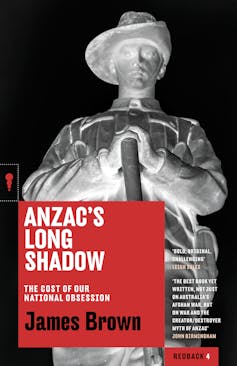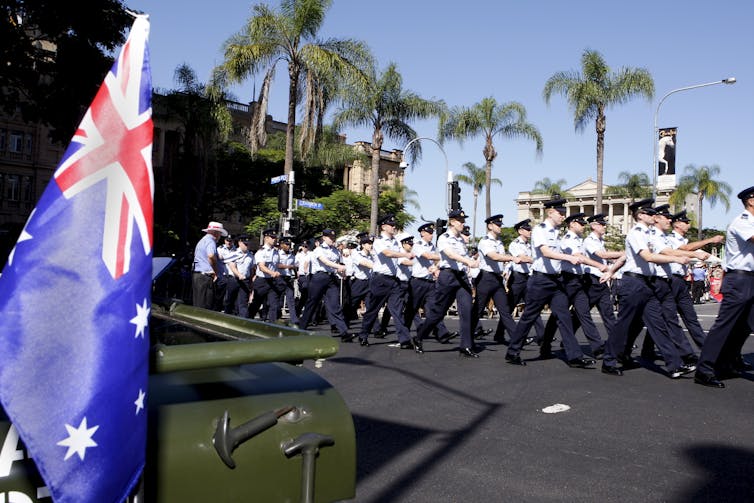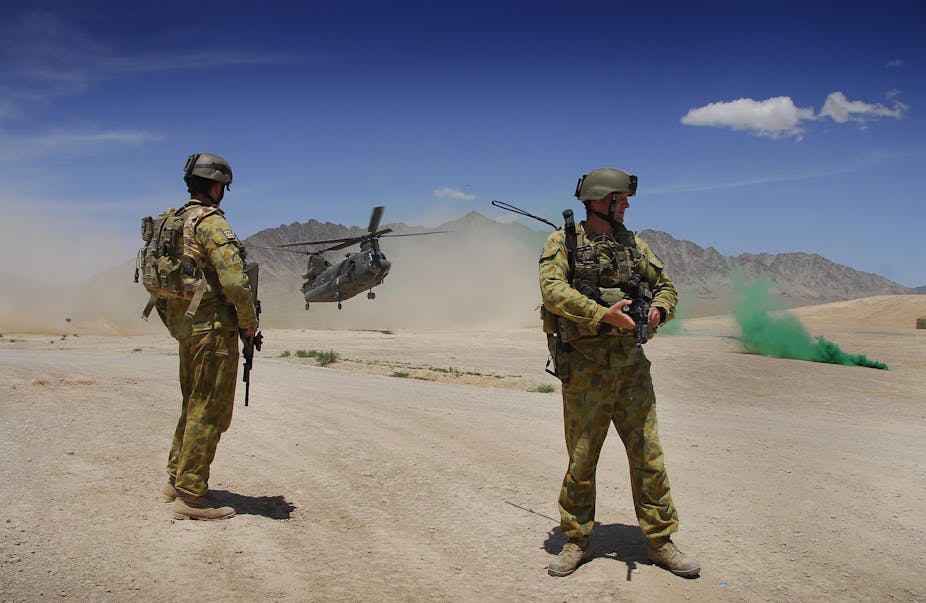In his new book Anzac’s Long Shadow: The cost of our national obsession, James Brown argues that:
a century after the war to end all wars, Anzac is being bottled, stamped and sold.
The former soldier turned scholar criticises excessive federal government spending on the four-year Anzac Centenary which, when supplemented by private donations, could reach more than A$600 million.
Brown recognises our Anzac obsesson is not new, claiming that federal legislation was introduced to protect the word “Anzac” from commercial use in the early 1920s.
In fact, regulations were enacted under the War Precautions Act in May 1916, little over 12 months after the landing, in response to a flood of Anzac branded products and trade names, including tea, soap and soft drink. Yet early commodification pales in comparison to the staggering appropriation of the mythology by the private sector over the past decade.
While Brown believes the money allocated to the Anzac Centenary would be better served by supporting veteran’s charities he admits that these organisations have also become part of the problem. Once guardians of Anzac, the fortunes of the RSL and Legacy have become increasingly tied to corporate cause marketing.

As a former marketing manager (turned historian) I can attest that cause marketing is not philanthropy – it is marketing. Corporations that align their brands with the RSL and Legacy have firm profit motives for doing so. Commodification masquerading as commemoration is less discernible but no less exploitative. It is also much harder to contest.
Brown’s highly readable book aims to provoke. He employs stinging metaphors to describe our Anzac fetish – claiming that “Anzac Day has morphed into a sort of military Halloween” and that the Centenary promises to be an “exorbitant four-year festival for the dead”.
Brown is highly critical of the rampant commodification of Australian military history by a burgeoning “Anzac Industry” and, ironically, it is these sensational claims that have led the promotional campaign for his book.
Yet to focus on this aspect alone misses the point.
Brown’s exploration of Anzac commodification is constructed as a counterpoint to his main argument – that the Australian defence force is underfunded and that the “digger myth” has left little room for appropriate awareness, appreciation or debate surrounding the work of today’s service personnel.
In their attempts to celebrate “a century of service” it seems the organisers of the Anzac Centenary have inadvertently raised some uncomfortable questions about how current servicemen and women relate to the Anzac legend.
While modern warfare has evolved, the mythology surrounding the volunteer digger has not. Brown claims the Anzac narrative “doesn’t yet have a place for quiet professional soldiers doing their job” and that “a surfeit of honour can scar today’s returning soldiers as much as insults scarred our Vietnam veterans”.
Brown echoes the views of several prominent Australian historians when he argues that the unwillingness of the federal government and defence department to talk about why Australian soldiers fight overseas and what they do there has resulted in a dangerous gap between myth and reality.
For ex-serviceman Brown, the “digger myth” does not aptly convey the complex experience of war – one better characterised by shades of grey than black and white.
He suggests that the mythology has “not only distorted society’s view of the military but also the military’s view of itself”, claiming that the Anzac legend has undermined the organisational culture of the Australian Defence Force.
He also echoes historians when he insists that increasingly sentimental approaches to commemoration have acted to conflate emotion as historical understanding and stifle much-needed critique and debate.

In a scathing review in the Quadrant, Mervin Bendle classed Brown’s book alongside Henry Reynolds and Marilyn Lake’s What’s Wrong With Anzac?: The Militarisation of Australian History but, despite outward similarities, this book is boldly distinctive. Unlike Reynolds and Lake, Brown wants to invest more in the military, not less. Brown does not seek to undermine the idea of an “Anzac Spirit”. Indeed, he admits this is the reason that he and many others joined the military in the first place.
Brown engages with the substantial historiography surrounding Anzac mythology too lightly and the evidence he employs to support his argument is often anecdotal. Furthermore, in a world in which celebrity VC winners receive lucrative book contracts, go on speaking tours and front multi-million dollar ad campaigns for beer brands – it is hard to believe that modern-day soldiers lack status and prestige.
Yet, there is much to like about this book.
Brown’s efforts remind us of the necessity of interdisciplinary approaches to understanding our military past. His claims upset the cosy assumptions of historians who assume that the Anzac resurgence has been wholly beneficial to the cause of the Australian military.
Collaboration between social historians, military historians and scholars of defence strategy is not absent, but sorely lacking. In their efforts to understand the social cost of war, many Australian historians have been guilty of neglecting to examine the military and strategic contexts in which these conflicts play out.
We would do well to remember that, as an ex-serviceman, Brown has a unique and privileged platform from which to critique the “digger myth”. The authority to challenge the mythology is all too often reserved to veterans and their families. There are many ways of “knowing war”. A national mythology in which all are encouraged to participate but few are allowed to critique does not serve its citizens well.
Has the Anzac Industry passed its used-by-date? Only time will tell. But the public reaction to Brown’s book suggests that the Anzac Centenary is set to become a focus of debate and critique as well as commemoration.
Anzac’s Long Shadow: The Cost of Our National Obsession by James Brown is published by Black Inc.

